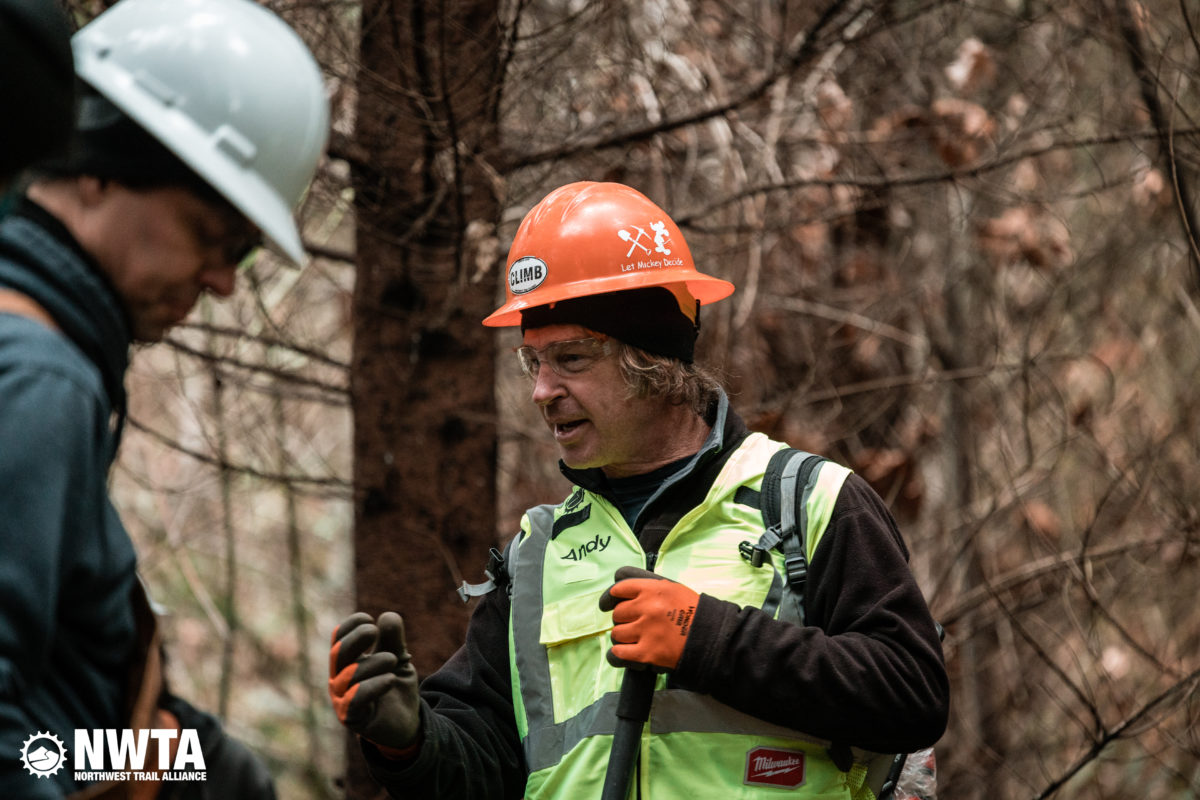Tell us a little bit about yourself.
I am a native Oregonian who has always loved spending time outdoors. When I’m not volunteering with NWTA, I am a Civil Engineer who specializes in the design of public access parks, trails, and boating facilities. Personal and work-life all have one common theme – water. Designing projects, supervising construction, and monitoring success over my career provides a good perspective of what works, what doesn’t. I am able to take this experience and apply it to trail design, building, and maintenance.

What interested you in becoming a TSI Instructor?
As Advocacy Director for NWTA, I was at the leading edge of hearing criticisms from people who did not support bikes on trails. Their primary argument was that bikes damage the environment, cause erosion, and harm salmon. How could this be? The trails at Rocky Point, on Forest Service land, and other places that allowed bikes always seemed free of sediment and mud, when compared with local trails which prohibit bikes. After Metro conducted a scientific review of the science and determined that bikes and hiking have similar impacts, it became pretty clear mountain bikers have been environmentalists all along, we just did not know it. We have always been environmentalists and understanding what we have been doing in the past was right. TSI is simply formalizing this, developing the story, and making sure we all have the same narrative and template to work from moving forward.
What do you enjoy most about being a TSI Instructor?
Hearing people introduce themselves in the morning, and hearing them talk about our sustainable trail work at the end of the day.
Why do you think this program is important and/or why should folks participate in this program?
Because you are an environmentalist, care about where we ride and the experience of getting connected with nature with you and your friends.
What aspect of trail maintenance/building can you nerd out on the most?
Solving problems. I enjoy finding a section of trail that is not working, trying to figure out a way to realign it, address the drainage and other causes and then fix it. Then the most fun is to abandon and re-naturalize the old trail bed. Replanting ferns and applying nature’s spackle to hide any evidence there ever was a trail there in the past. It is getting harder to find these opportunities at trails open to bikes as more people adopt TSI’s practices.